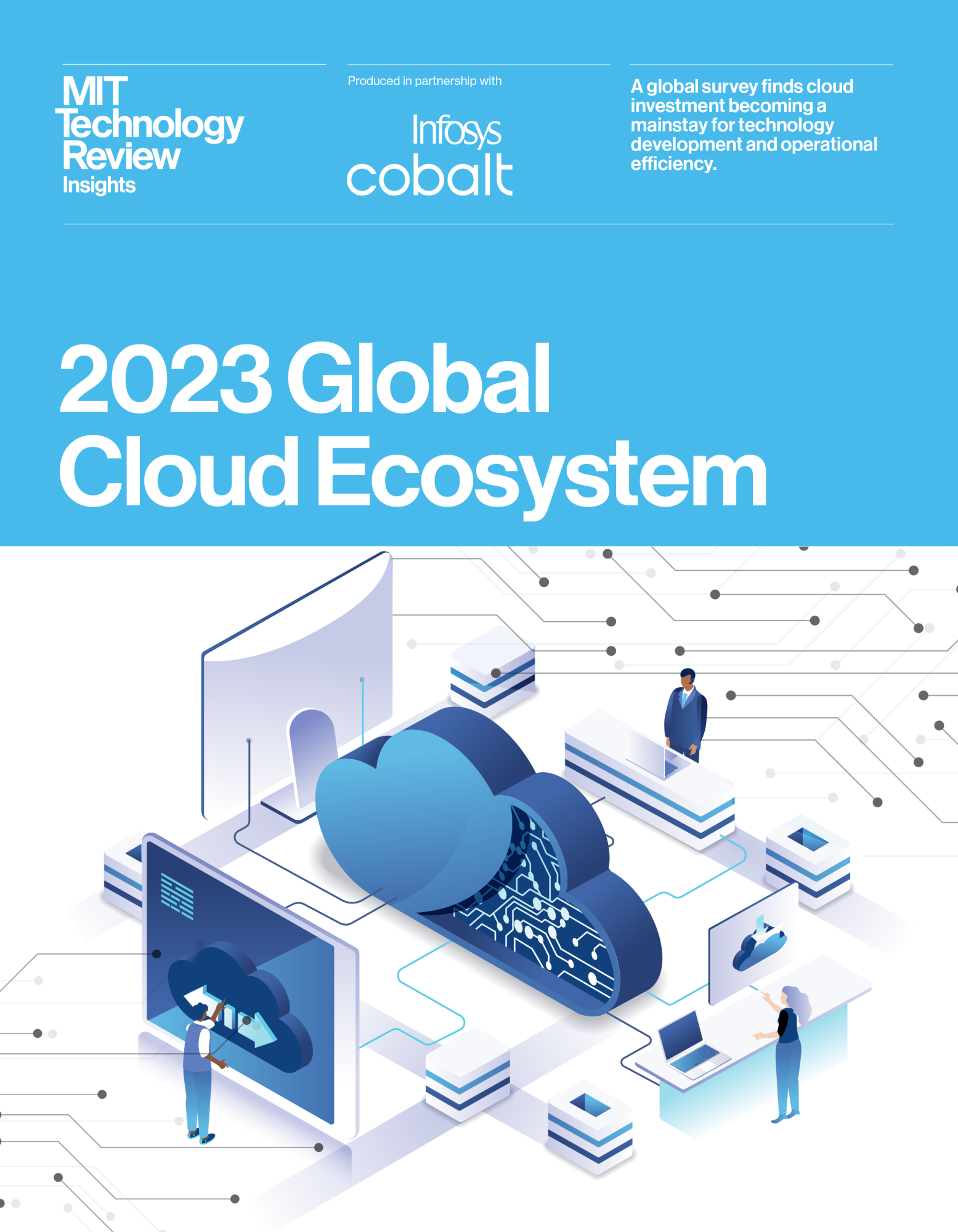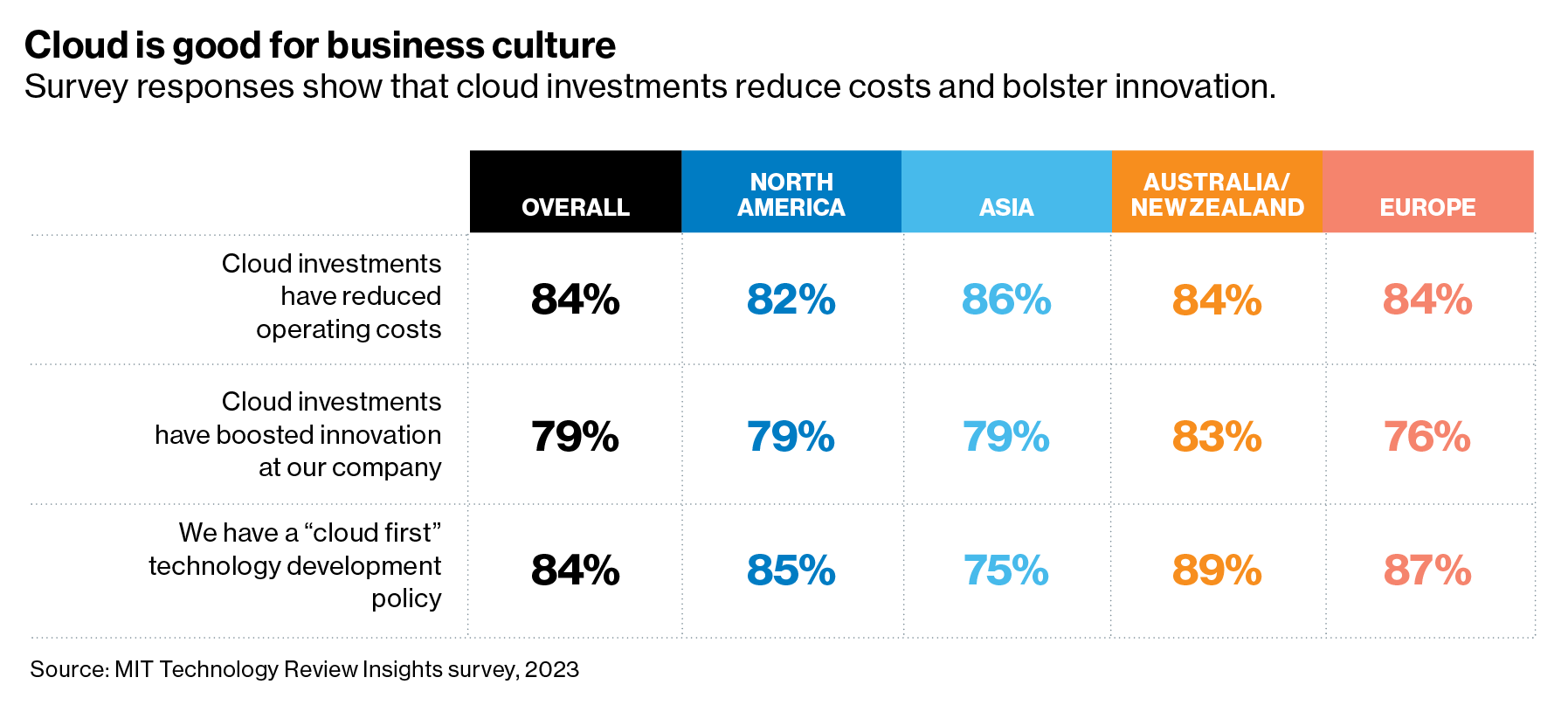2023 Global Cloud Ecosystem
The cloud, fundamentally a tool for cost and resource efficiency, has long enabled companies and countries to organize around digital-first principles. It is an established capability that improves the bottom line for enterprises. However, maturity lags, and global standards are sorely needed.

Cloud capabilities play a crucial role in accelerating the global economy's next stage of digital transformation. Results from our 2023 Global Cloud Ecosystem survey of executives indicate there are two stages of cloud maturity globally: one where firms adopt cloud to achieve essential opex and capex cost reduction, and a second where firms link cloud investments to a positive business value. Respondents indicate the two are converging quickly.
DOWNLOAD THE REPORTThe key findings are as follows:
- Cloud helps the top and bottom line globally. Cloud computing infrastructure investment will be more than 60% of all IT infrastructure spend worldwide in 2023, according to analyst firm IDC, as flexible cloud resources continue to define efficiency and productivity for technology decision-makers. More than eight out of 10 survey respondents report more cost efficiency due to cloud deployments. While establishing a link between cloud capabilities and top-line profitability is challenging, 82% say they are currently tracking cloud ROI, and 66% report positive ROI from cloud investments.

- Cloud-centric organizations expect strong data governance (but don't always get it). Strong data privacy protection and governance is essential to accelerate cloud adoption. Perceptions of national data sovereignty and privacy frameworks vary, underscoring the lack of global standards. Most respondents decline to say their countries are leaders in the space, but more than two-thirds say they keep pace.
- All in for zero-trust. Public and hybrid cloud assets raise cybersecurity concerns. But cloud is required to grow AI and automation, which help secure digital assets with data cataloging, access, and visibility. Because of the risk associated with AI, the broad surface of the data it draws on, and the way AI generates change, the zero-trust user paradigm has gained wide acceptance across industries. Some 86%of the survey respondents use zero-trust architecture. However, one-third do not routinely identify and classify cloud assets.
- Sustainability in the cloud. The cloud's primary function-scaling up computing resources-is a key enabler that mitigates compliance issues such as security; privacy; and environment, social, and governance (ESG). More than half (54%) of respondents say they use cloud tools for ESG reporting and compliance, and a large number (51%) use cloud to enhance diversity, equity, and inclusion (DEI) compliance.
This content was produced by Insights, the custom content arm of MIT Technology Review. It was not written by MIT Technology Review's editorial staff.